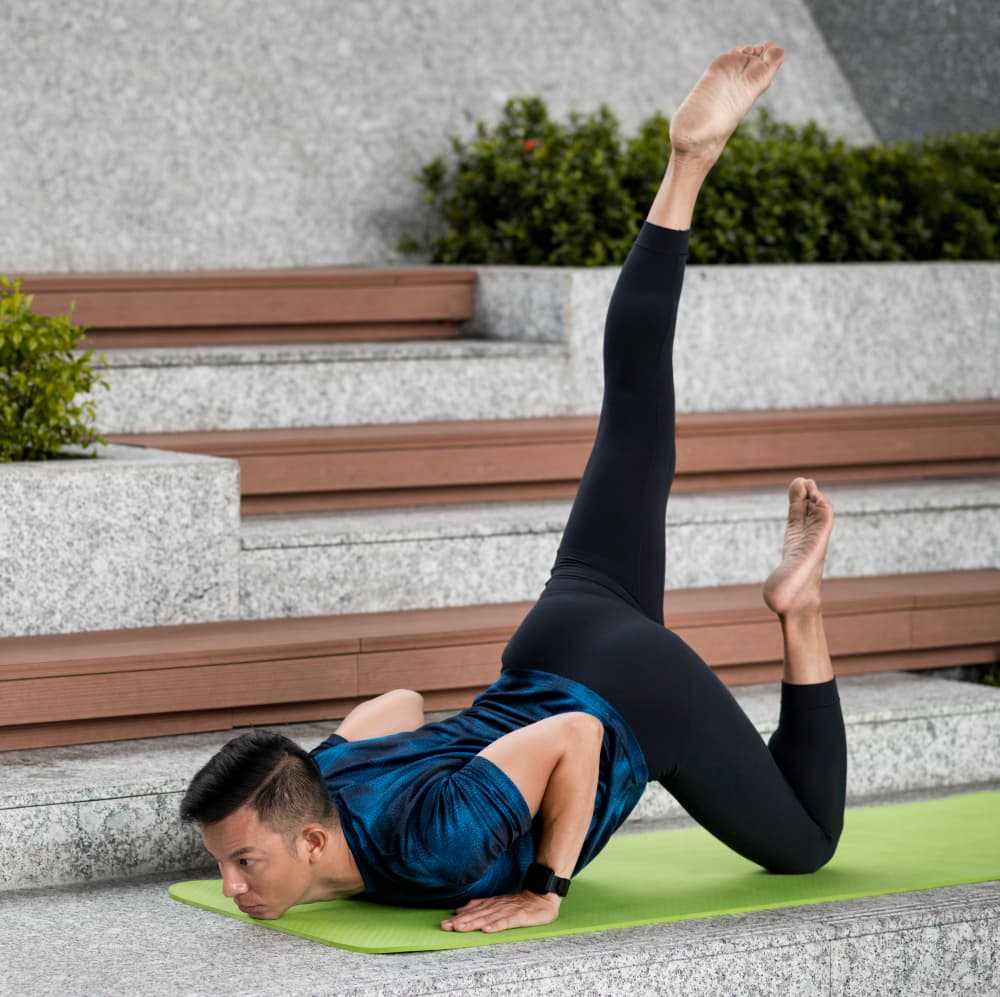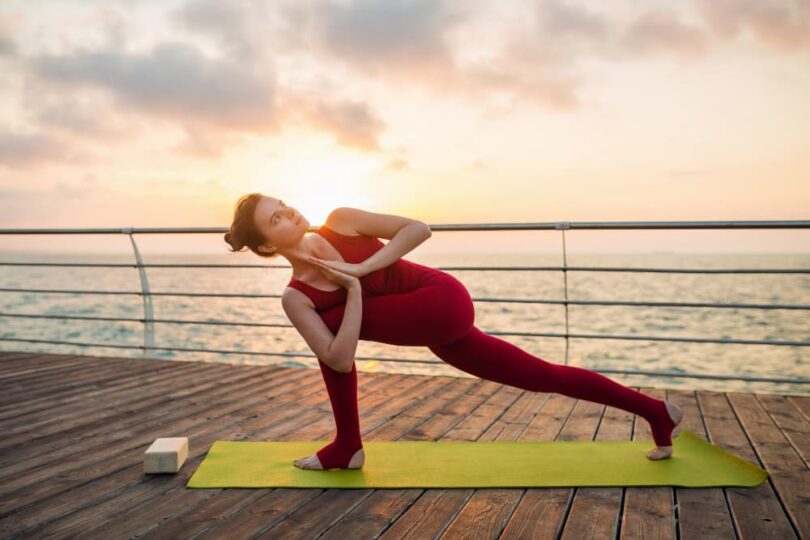Introduction
Hatha yoga, one of the most popular styles of yoga, is known for its balance of physical postures and breathing techniques. This ancient practice is not just about the physical body but also about connecting the mind and spirit. In this article, we’ll break down the key aspects of Hatha yoga, including its history, philosophy, and benefits. Whether you’re a beginner or a seasoned yogi, you’ll find valuable insights into this transformative practice.
What is Hatha Yoga?
Hatha yoga is an ancient practice that combines physical postures (asanas) and breathing techniques (pranayama) to create a balanced flow of energy in the body. The word “Hatha” comes from the Sanskrit terms “Ha” (sun) and “Tha” (moon), symbolizing the dualities in life and aiming to harmonize them.
The Meaning of Hatha
The term “Hatha” literally means “force” in Sanskrit, referring to the physical techniques used in this type of yoga. It’s designed to align and calm your body, mind, and spirit in preparation for meditation. This balance of “Ha” and “Tha” represents the duality of the universe, such as day and night, and the balance between the sun and moon energies within us.
Philosophy of Hatha Yoga
The philosophy of Hatha yoga is rooted in the belief that mastering the body is essential for the mind to be free. This form of yoga emphasizes the purification of the physical body to help cleanse the mind. By practicing Hatha yoga, one can achieve a state of spiritual perfection where the mind is clear and focused.
Connection Between Body, Mind, and Spirit
Hatha yoga’s connection between the body, mind, and spirit is fundamental. Physical postures help prepare the body, making it strong and flexible. Breathing techniques (pranayama) help control the flow of life energy (prana), and meditation practices help still the mind. Together, these elements create a holistic approach to wellness.
Goals of Hatha Yoga Practice
The primary goal of Hatha yoga is to attain a higher state of consciousness. By focusing on physical and mental practices, Hatha yoga aims to purify the body and mind, leading to spiritual growth. It’s about finding inner peace and balance, improving physical health, and achieving mental clarity.
The Eight Limbs of Yoga
The Eight Limbs of Yoga, outlined by the sage Patanjali in the Yoga Sutras, provide a framework for living a meaningful and purposeful life. Hatha yoga fits into this framework by focusing on the third (asanas), fourth (pranayama), and sixth (Dharana) limbs.
Brief Introduction to Patanjali’s Eight Limbs of Yoga
- Yama: Ethical standards
- Niyama: Self-discipline
- Asana: Physical postures
- Pranayama: Breathing techniques
- Pratyahara: Withdrawal of senses
- Dharana: Concentration
- Dhyana: Meditation
- Samadhi: State of ecstasy
How Hatha Yoga Fits Into This Framework
Hatha yoga primarily emphasizes asanas and pranayama, which are physical practices. These help to prepare the practitioner for the more advanced stages of meditation and concentration. By mastering the body and breath, one can achieve a higher level of awareness and inner peace.

Practice and Techniques
Physical Postures (Asanas)
Hatha yoga places a strong emphasis on physical postures known as asanas. These postures are designed to align, strengthen, and calm the body. Practicing asanas helps to improve flexibility, balance, and muscle tone. Some of the most common asanas in Hatha yoga include:
Common Asanas Practiced in Hatha Yoga
- Tadasana (Mountain Pose)
- This foundational pose helps with balance and grounding.
- Stand tall with feet together and arms at your sides, and distribute weight evenly.
- Adho Mukha Svanasana (Downward-Facing Dog)
- A rejuvenating pose that stretches the entire body.
- Start on your hands and knees, then lift your hips up and back.
- Trikonasana (Triangle Pose)
- Strengthens legs, stretches hips and spine, and opens the chest.
- Stand with feet wide apart, extend arms, and reach one hand down while the other points up.
- Virabhadrasana (Warrior Pose)
- Builds strength and stamina.
- Stand with legs apart, bend the front knee, and stretch your arms overhead or out to the sides.
- Savasana (Corpse Pose)
- A relaxation pose to end the session.
- Lie on your back, arms by your sides, and let your body relax completely.
Benefits of Asanas
Practicing asanas regularly can lead to numerous physical benefits, such as increased flexibility, better posture, and improved strength. Additionally, it can aid in the reduction of stress and anxiety, leading to overall better mental health.
Breathing Techniques (Pranayama)
Breathing is a crucial component of Hatha yoga, with various techniques designed to control and direct the flow of breath. Pranayama, or breathing exercises, help to increase the intake of oxygen, clear the mind, and balance energy levels.
Common Breathing Exercises in Hatha Yoga
- Ujjayi (Victorious Breath)
- A calming breath that is often used during asanas.
- Inhale and exhale deeply through the nose, creating a gentle sound in the throat.
- Nadi Shodhana (Alternate Nostril Breathing)
- Balances the nervous system.
- Use your thumb to close one nostril, inhale, then switch nostrils for the exhale.
- Kapalabhati (Skull Shining Breath)
- A cleansing breath that invigorates the body.
- Rapid, forceful exhalations followed by passive inhalations.
- Bhramari (Bee Breath)
- Calms the mind and reduces stress.
- Inhale deeply, then hum on the exhale, mimicking the sound of a bee.
Benefits of Pranayama
Regular practice of pranayama can improve respiratory function, reduce stress, and enhance mental clarity. It helps to increase lung capacity and can also support emotional stability.
Meditation and Relaxation
Meditation is an integral part of Hatha yoga, often practiced after the physical postures and breathing exercises. It involves focusing the mind and eliminating distractions to achieve a state of inner peace and calm.
Techniques for Relaxation and Mindfulness
- Guided Meditation
- Follow a guide’s instructions to focus your mind and relax your body.
- It can be done sitting or lying down.
- Mindfulness Meditation
- Focus on the present moment, observing thoughts without judgment.
- Often combined with deep breathing.
- Chanting Mantras
- Repetition of sounds or phrases to aid concentration.
- Common mantras include “Om” or “So Hum.”
Regular meditation practice can reduce stress, improve concentration, and promote a sense of well-being. It’s a powerful tool for mental and emotional health, complementing the physical benefits of asanas and pranayama.
Related Article: Hatha Yoga: A Comprehensive Guide to Mind-Body Wellness
Health Benefits
Physical Health Benefits
Hatha yoga is known for its numerous physical health benefits. Regular practice can significantly improve overall physical well-being, contributing to a healthier, more active lifestyle.
Impact on Flexibility, Strength, and Balance
One of the most obvious benefits of Hatha yoga is increased flexibility. The various asanas stretch and lengthen the muscles, enhancing flexibility over time. This can help prevent injuries and improve overall physical performance.
Strength is another key benefit. Many yoga poses require you to support your body weight in new ways, which helps build muscle strength. For example, poses like Plank and Warrior strengthen the arms, legs, and core.
Balance is also improved through Hatha yoga. Postures such as Tree Pose and Eagle Pose challenge your balance, which can enhance coordination and stability.
Benefits for Cardiovascular and Respiratory Systems
Hatha yoga can benefit the cardiovascular system by promoting better circulation and reducing blood pressure. The combination of physical postures and breathing exercises supports heart health and can improve overall cardiovascular function.
Breathing techniques (pranayama) practiced in Hatha yoga are particularly beneficial for the respiratory system. They help increase lung capacity, improve oxygen intake, and strengthen the diaphragm. This can be especially helpful for people with respiratory issues, as it promotes better breathing patterns.
Mental and Emotional Benefits
In addition to physical health, Hatha yoga offers substantial mental and emotional benefits. Regular practice can lead to a calmer mind, reduced stress levels, and greater emotional resilience.
Stress Reduction and Mental Clarity
One of the main reasons people turn to Hatha yoga is its stress-relieving properties. The combination of physical activity and focused breathing helps to calm the nervous system, reducing the production of stress hormones.
Meditation and relaxation techniques practiced in Hatha yoga contribute to mental clarity. By focusing the mind and eliminating distractions, practitioners can experience a sense of inner peace and tranquility. This clarity can improve concentration, decision-making, and overall mental function.
Emotional Stability and Resilience
Hatha yoga can also enhance emotional well-being. The practice encourages mindfulness and self-awareness, helping individuals become more in tune with their emotions. This heightened awareness can lead to better emotional regulation and resilience.
By regularly practicing Hatha yoga, individuals can develop coping mechanisms that support emotional stability. This can be particularly beneficial during times of stress or emotional turmoil, providing a stable foundation to navigate life’s challenges.
Hatha yoga’s holistic approach to health makes it a powerful practice for both the body and mind. By integrating physical postures, breathing exercises, and meditation, practitioners can experience a wide range of benefits that contribute to overall well-being. In the next part, we will compare Hatha yoga with other popular styles, such as Vinyasa and Ashtanga, to highlight the unique aspects of each practice.
Comparison with Other Yoga Styles
Hatha Yoga vs. Vinyasa Yoga
Hatha yoga and Vinyasa yoga are both popular styles, but they differ significantly in their approach and pace.
Key Differences and Similarities
Hatha yoga is typically slower-paced, focusing on holding poses for longer periods. This allows practitioners to delve deeper into each posture, working on alignment and breath control. It’s an excellent choice for beginners or those looking for a more meditative practice.
In contrast, Vinyasa yoga is more dynamic, linking breath with movement in a continuous flow. Often referred to as “flow” yoga, Vinyasa classes are usually more physically demanding, incorporating a variety of poses that transition smoothly from one to another. This makes it ideal for those looking for a more vigorous workout.
Benefits of Each Style
Hatha yoga’s slower pace makes it perfect for building strength, flexibility, and mental focus. It’s a great way to learn the basics and develop a strong foundation in yoga.
Vinyasa yoga, on the other hand, offers a cardiovascular workout that improves endurance and stamina. The continuous movement keeps the heart rate up, providing a full-body workout that enhances overall fitness.
Hatha Yoga vs. Ashtanga Yoga
While Hatha and Ashtanga yoga share some similarities, they also have distinct differences that set them apart.
Key Differences and Similarities
Hatha yoga is flexible in its structure, with each class potentially offering a different sequence of poses. This variability allows for a customized approach, catering to the needs of the practitioners.
Ashtanga yoga, however, follows a set sequence of postures known as the Primary Series. This rigorous style requires dedication and consistency, as the same poses are practiced in the same order every time. It’s a more disciplined form of yoga, demanding physical and mental commitment.
Benefits of Each Style
Hatha yoga’s adaptability makes it suitable for all levels, providing a gentle introduction to yoga or a relaxing practice for experienced yogis. It emphasizes the balance between effort and relaxation, making it accessible and enjoyable.
Ashtanga yoga, with its structured and repetitive nature, is excellent for building strength, flexibility, and discipline. The consistency of practice helps deepen one’s understanding of each pose, leading to significant progress over time.
Related Article: Exploring the Essence and Practice of Hatha Yoga
FAQs
What is Hatha Yoga Good For?
Hatha yoga is beneficial for both the mind and body. It helps improve flexibility, strength, and balance. The practice also promotes mental clarity and reduces stress through meditation and breathing techniques. Additionally, it can aid in cardiovascular health and support respiratory function.
How Often Should I Practice Hatha Yoga?
The frequency of Hatha yoga practice depends on individual goals and schedules. Beginners might start with two to three times a week to build a foundation and avoid injury. More experienced practitioners might aim for daily practice to deepen their skills and experience the full benefits. Consistency is key, so find a routine that works for you and stick with it.
Can Anyone Practice Hatha Yoga?
Yes, Hatha yoga is accessible to people of all ages and fitness levels. It is especially suitable for beginners due to its slower pace and focus on alignment. However, it’s always a good idea to consult with a healthcare provider before starting any new exercise regimen, especially if you have preexisting conditions or concerns.
Is Hatha Yoga a Good Workout?
Hatha yoga can be a great workout, depending on the intensity and the poses practiced. It builds muscle strength, enhances flexibility, and improves balance. While it may not be as vigorous as Vinyasa or Ashtanga yoga, it still offers significant physical benefits and can be quite challenging, especially for those new to yoga.
What Should I Bring to a Hatha Yoga Class?
For a Hatha yoga class, bring a yoga mat, a water bottle, and a towel. Comfortable, breathable clothing that allows for a full range of motion is essential. You might also want to bring props like a yoga block or strap, which can help with certain poses and make the practice more accessible.
How Do I Get Started with Hatha Yoga?
To start Hatha yoga, look for beginner classes at a local studio or online. Start slowly and focus on learning the basics of asanas (postures) and pranayama (breathing techniques). Consistency is crucial, so try to practice regularly, even if it’s just for a short period each day. Listening to your body and practicing mindfulness will help you progress safely and effectively.
Conclusion
In summary, Hatha yoga is a versatile and beneficial practice that combines physical postures, breathing techniques, and meditation. It offers a balanced approach to improving both physical and mental health. By practicing Hatha yoga regularly, you can increase your flexibility, build strength, and find greater mental clarity and emotional stability.
Whether you’re a beginner looking to start your yoga journey or an experienced practitioner seeking to deepen your practice, Hatha yoga provides a solid foundation. The emphasis on alignment and breath control makes it accessible and beneficial for everyone, regardless of age or fitness level.
Starting with Hatha yoga can be as simple as finding a local class or following online tutorials. Remember to practice with mindfulness and patience, and over time, you’ll likely see improvements in your physical and mental well-being.







